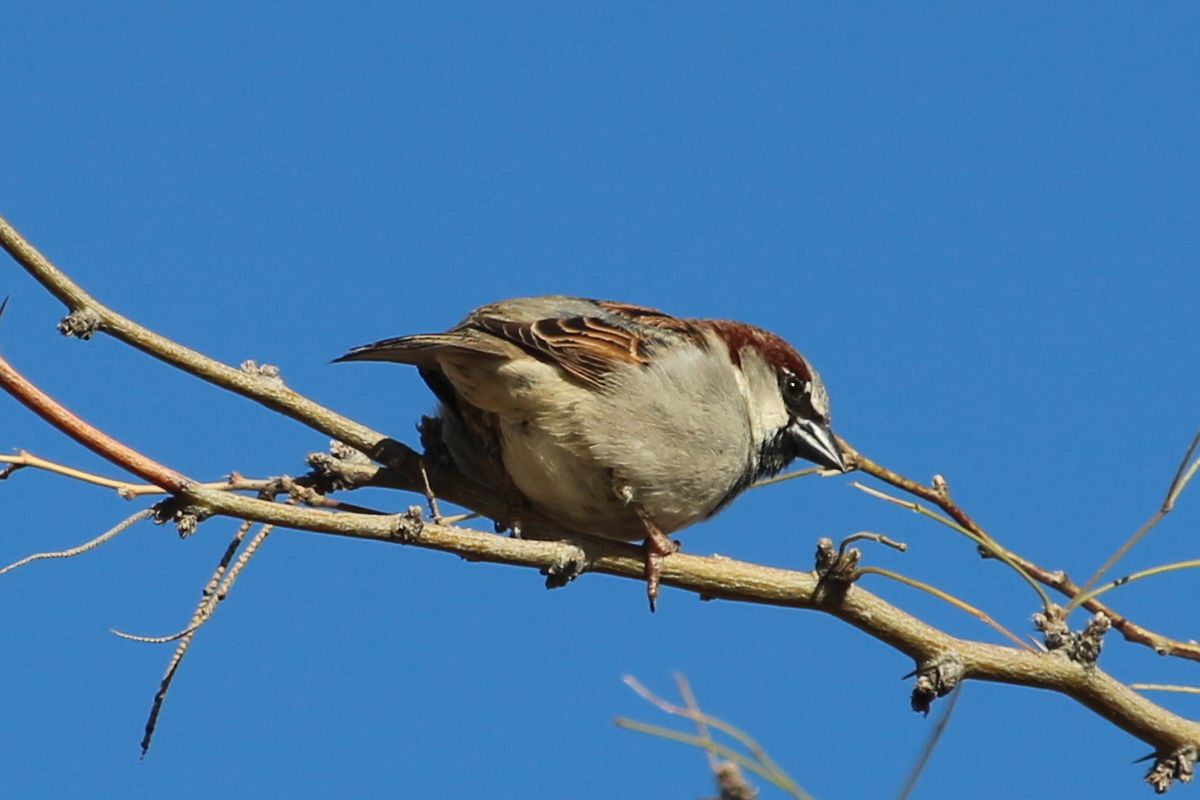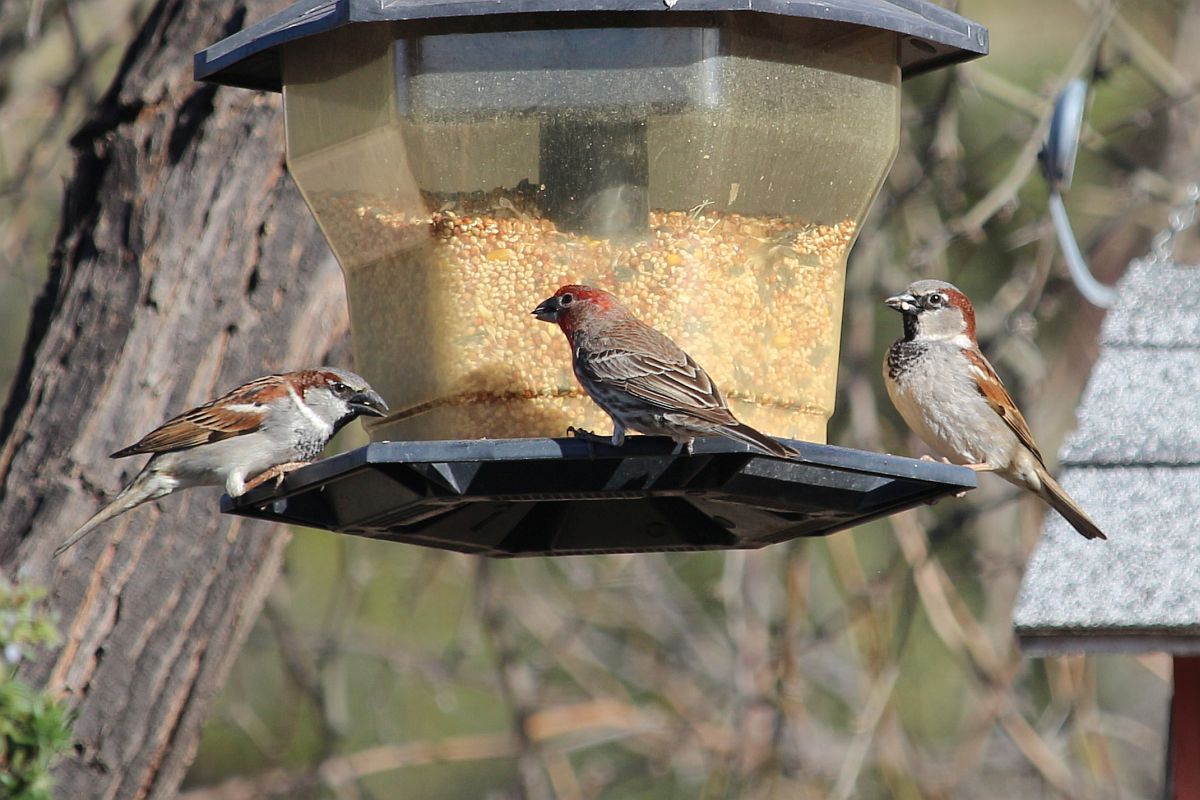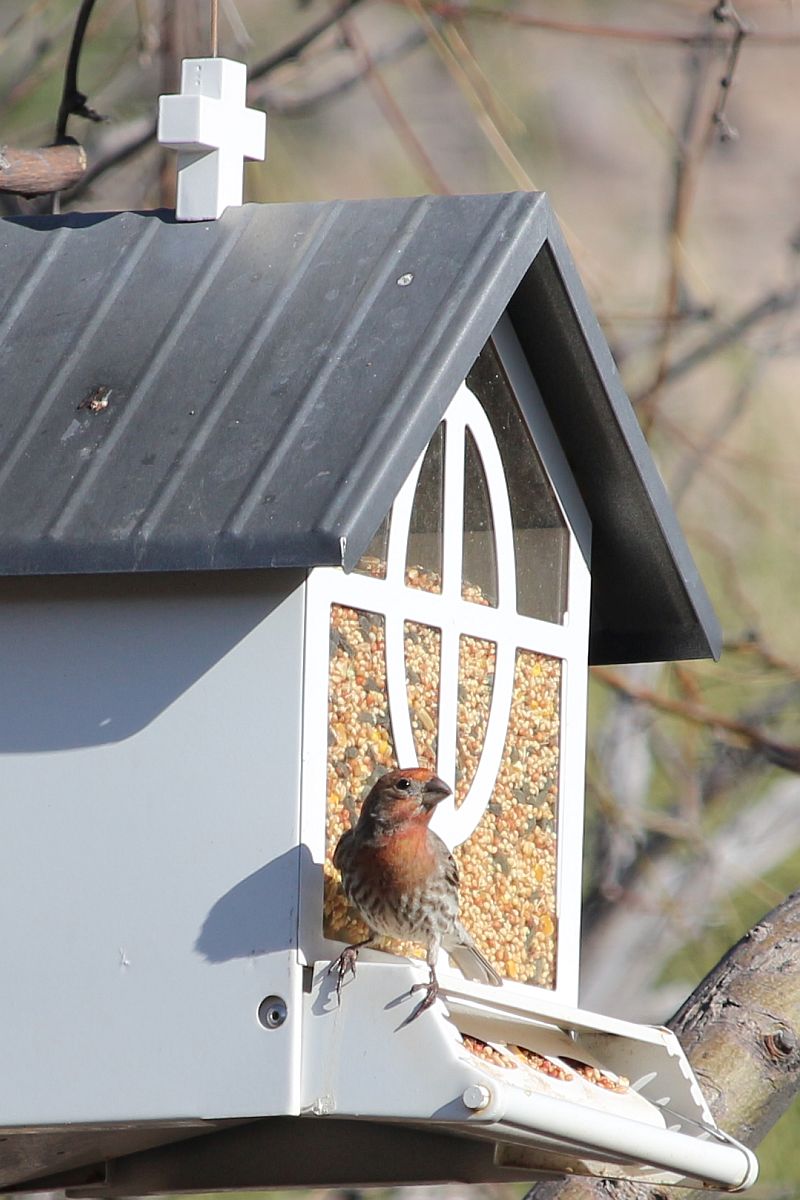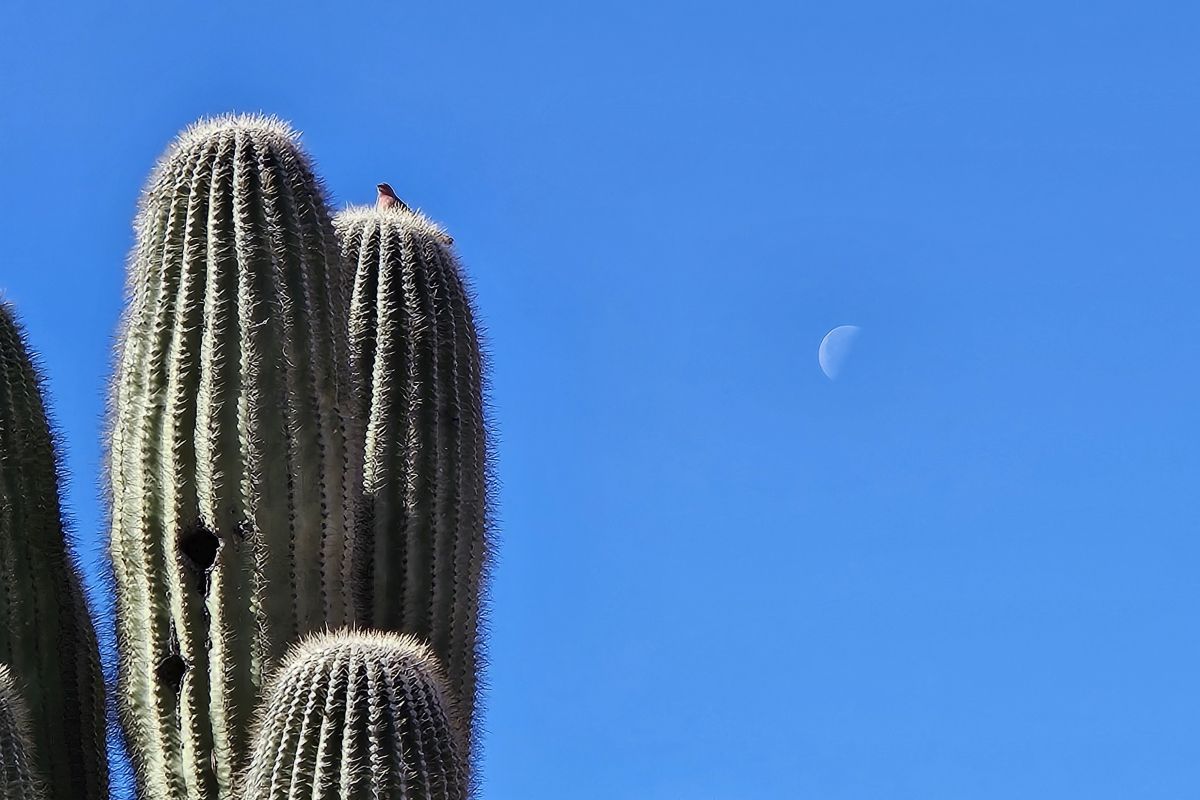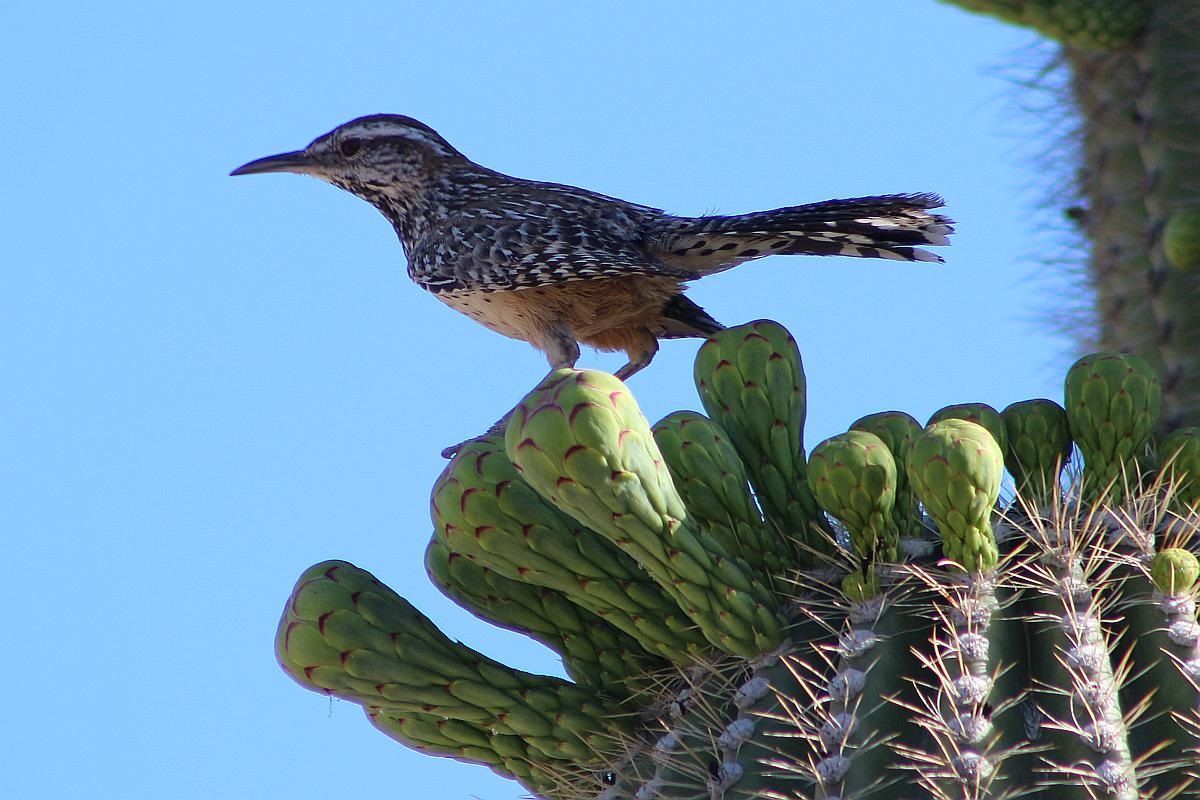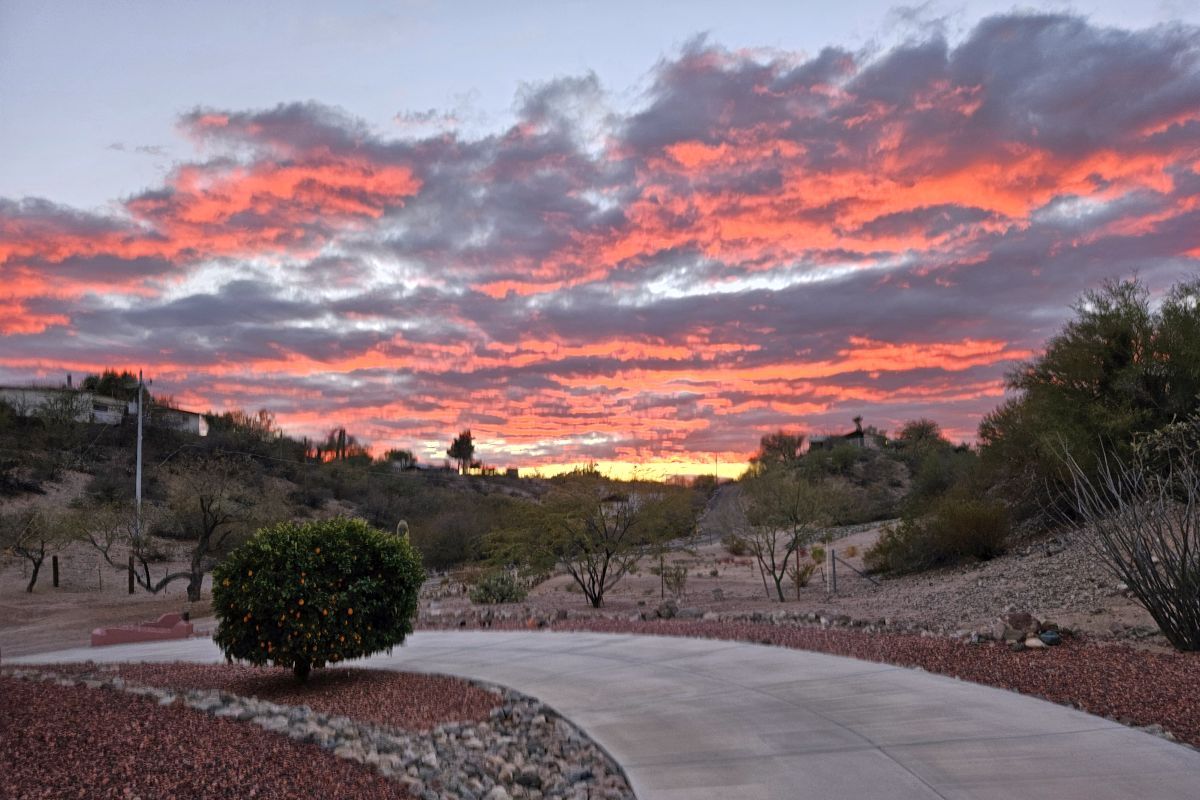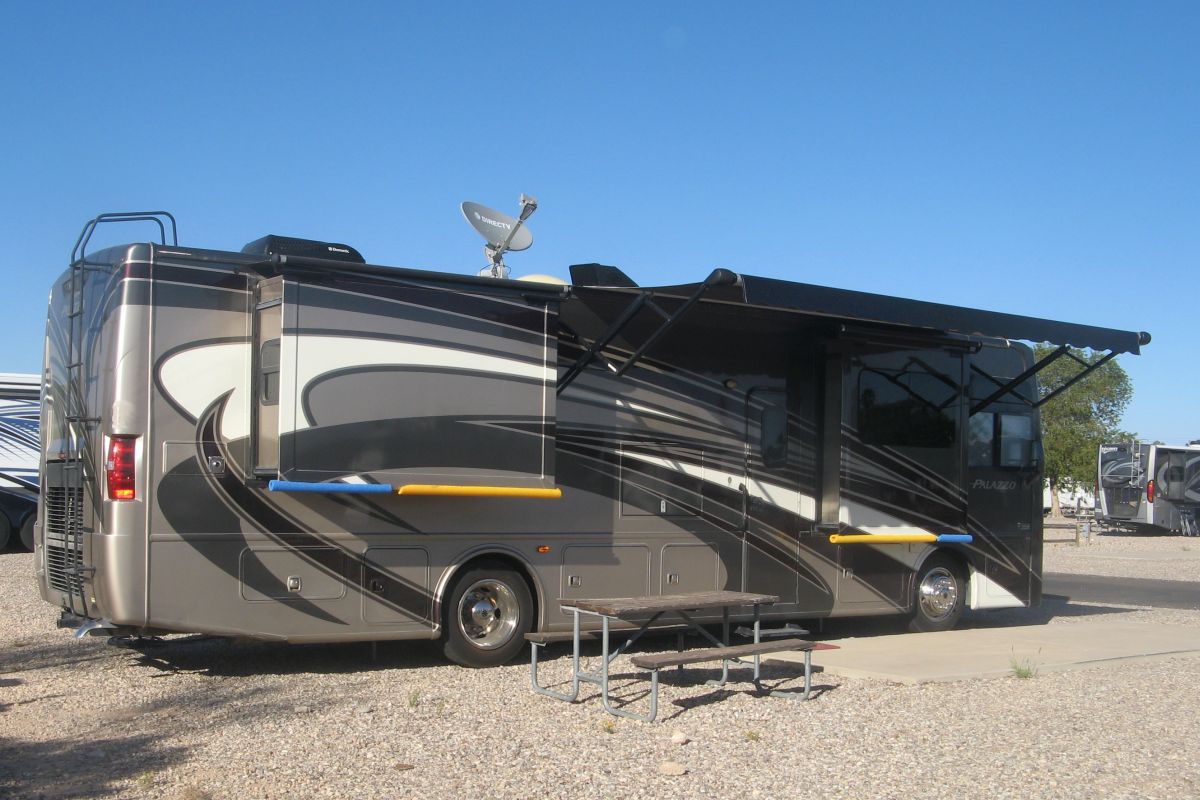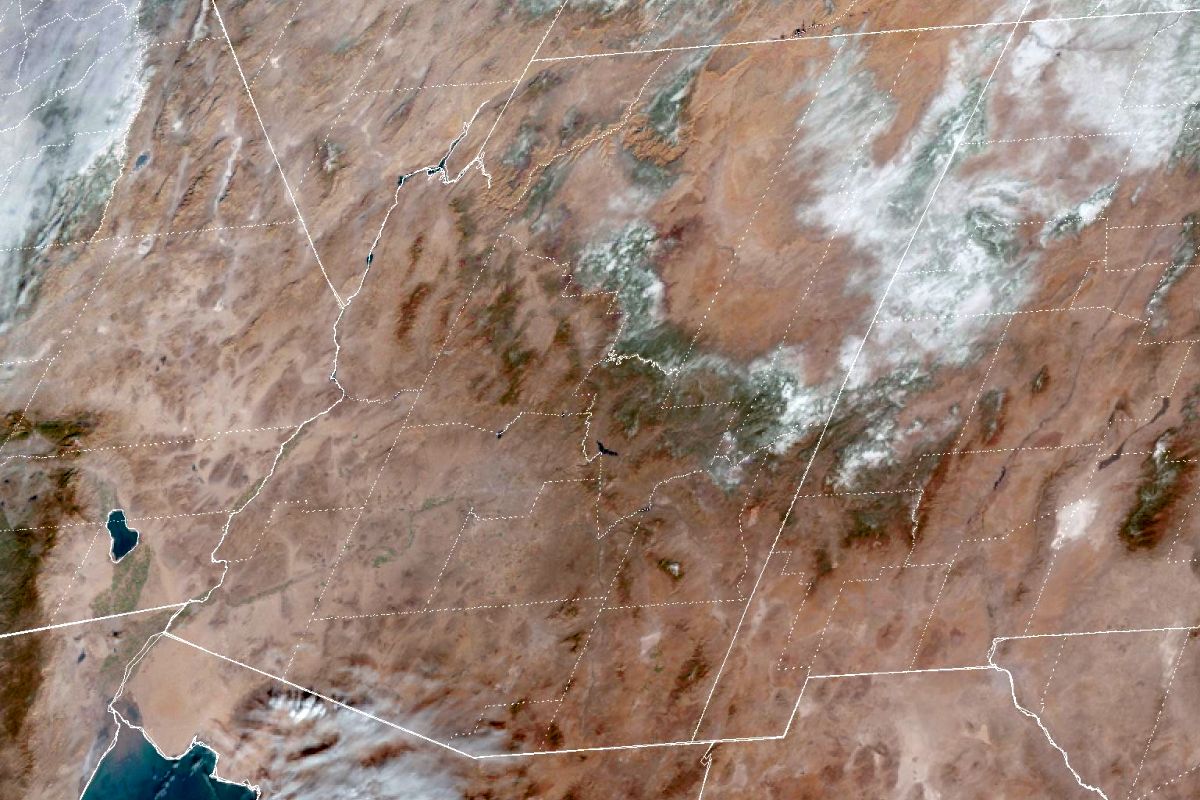
Image cropped from GOES. Click to enlarge.
Much of the country received a “polar vortex” event, which caused temperatures to drop dramatically. Our version of the event was probably much milder than a lot of places north and east of here; we only had temperatures drop below 32° for a couple of nights the lows reaching maybe 29-31°. We got no ill effects from the cold save for some damage to the leaves (and not the fruit) on our little lemon tree.
Now, the temperatures are looking more like our normal Sonoran desert conditions for January with lows in the 40s and highs in the 70s. We like it.
The almost cloudless image above was taken from the GOES satellite imagery a couple of days ago. Our location is on the top of Maricopa county just to the left and below image center. In the image within Arizona you can see white areas of snow along the Mogollon Rim and in higher areas in Northern Arizona.
